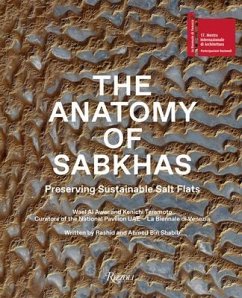Sabkhas (salt flats) are natural phenomena-a unique result of converging climates, winds, and river flow-with the potential to rehabilitate the natural global order. The ancient term sabkha originates in the Arab world. Today, it has become well-established in the global lexicon of geological and ecological discussions around sustainability: These overlooked ecological networks of wetland plants can sequester more carbon per square meter than rainforests. The Anatomy of Sabkhas investigates how these precious resources form, how they have aided the development of human civilization throughout history, and how they have subsequently infiltrated our traditions, rituals, festivals, smartphones, and cities today. Written and edited by urbanists and architects, the book examines the ways that sabkhas might actively contribute to more sustainable built environments and how, in tandem, sabkhas can not only support our natural environment but also heal it.








